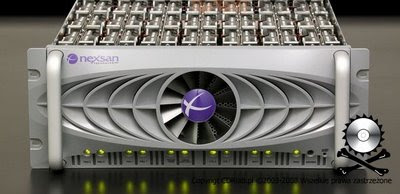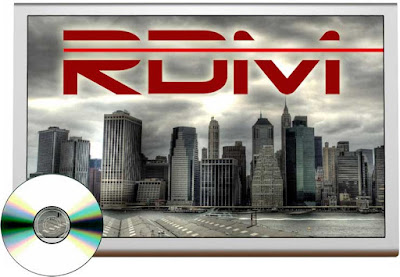1. Recently I was asked to write a paper on Trends in Storage Technology for an internal office magazine.Although have been aware of the trends in a hazzy manner but it gave me an opportunity to revise the entire lot and infact made myself cognizant of many new things all set to arrive in near future.Relevant extract as would be making the reader wise on subject matter is produced below.
2. Many different forms of storage, based on various natural phenomena, have been invented. So far, no practical universal storage medium exists, and all forms of storage have some drawbacks. Therefore a computer system usually contains several kinds of storage, each with an individual purpose. The two primary storage technologies are magnetic and optical.
3. The primary types of magnetic storage are:
(a) Diskettes (floppy disks)
(b) Hard disks
(c) High-capacity floppy disks
(d) Disk cartridges
(e) Magnetic tape
4. The primary types of optical storage are:
(a) Compact Disk Read-Only Memory (CD-rfruROM)
(b) Digital Video Disk Read-Only Memory (DVD-ROM)
(c) CD-Recordable (CD-R)
(d) CD-Rewritable (CD-RW)
FUTURE TRENDS
5. MEMS : One technology that promises to store more information than disk drives is micro electromechanical systems. MEMS have electrostatic actuators — electrically-driven springs and levers — that can move components like storage media and read/write heads tiny, precise distances. It involves recording bits by heating the tips to melt tiny pits in a plastic storage medium, similar to burning a CD. The presence of a pit represents a 1 and the absence a 0. The device reads bits by sensing changes in temperature. When a tip moves across the surface and falls into a pit, more of the tip is in contact with the surface, which causes it to dissipate heat more quickly.

6. Holographic Storage : Holographic storage devices have the potential to both hold much more data than magnetic technologies and access it much faster. Holograms are made by bouncing a laser beam off an object and having a second laser beam intersect the reflected light. The laser beams interfere with each other, producing a unique pattern of bright and dark areas that can be captured in storage media like light- sensitive plastics or glass composites. The resulting hologram can be illuminated by shining the second laser beam on the media at the same angle as when the hologram was recorded.
7. Blu Ray : Blu-ray Disc (also known as Blu-ray or BD) is an optical disc storage medium designed/created by Sony to supersede the standard DVD format. Its main uses are for storing Playstation 3 games, high-definition video and data storage with 50GB per disc. The disc has the same physical dimensions as standard DVDs and CDs. The name Blu-ray Disc derives from the blue-violet laser used to read the disc. While a standard DVD uses a 650 nanometre red laser, Blu-ray uses a shorter wavelength, a 405 nm blue-violet laser, and allows for almost six times more data storage than on a DVD.

8. Network Storage : Network storage is a generic term used to describe network-based data storage, but there are many technologies within it. Direct Attached Storage (DAS) is a storage device that is directly attached to a host system. The simplest example of DAS is the internal hard drive of a server computer, though storage devices housed in an external box come under this banner as well. DAS is still, by far, the most common method of storing data for computer systems.
9. Molecular Switches : Storing a bit in a single molecule is about as small as you can get. Certain molecules can be used to store data because they can be switched back and forth between two stable states that can represent the 1s and 0s of digital data. One of these is rotaxane, which contains a thin, thread- like section with a ring that moves freely around it. The ends of the thread section are thicker, preventing the ring from slipping off. Researchers have found ways to move the ring from one end of the thread to the other and the ring will stay where it is placed.
10. Nanotechnology, shortened to "Nanotech", is the study of the control of matter on an atomic and molecular scale. Generally nanotechnology deals with structures of the size 100 nanometers or smaller, and involves developing materials or devices within that size. Nanotechnology is very diverse, ranging from novel extensions of conventional device physics, to completely new approaches based upon molecular self-assembly, to developing new materials with dimensions on the nanoscale, even to speculation on whether we can directly control matter on the atomic scale. Breakthrough Nanotechnology Will Bring 100 Terabyte 3.5-inch Digital Data Storage Disks
11. Storage-specific operating system : Just as a computer operating system makes a computer usable, a storage-specific operating system will make storage devices and their associated networks operate in a usable manner. Powerful storage networking switches may provide the platform for the storage-specific operating system.Moving intelligence away from servers and storage systems into interconnected switches in the core of the network could solve interoperabliity problems that are inherent in heterogeneous enterprise environments and administration tools and allow complex infrastructures to be managed as a single, scalable entity.
12. Storage Virtualization: Virtualization improves storage manageability by separating the presentation of storage to the server operating system from the actual physical devices. Virtualization consists of taking several physical storage devices and joining them to appear as one logical unit to manage. This represents a collective pool from which users can request any amount of disk space. The users will thus be able to access storage without knowing where a device is, and how it is configured.
13. H.A.M.R : Heat-assisted magnetic recording ie HAMR is a technology that magnetically records data on high-stability media using laser thermal assistance to first heat the material. HAMR takes advantage of high-stability magnetic compounds such as iron platinum alloy. These materials can store single bits in a much smaller area without being limited by the same super paramagnetic effect that limits the current technology used in hard disk storage. The only catch being that they must be heated to apply the changes in magnetic orientation. HAMR was developed by Fujitsu in 2006 so that it could achieve one terabit per square inch densities.

14. R.A.I.D & M.A.I.D : RAID is an acronym to describe a Redundant Array of Inexpensive Disks, a technology that allowed computer users to achieve high levels of storage reliability from low-cost and less reliable PC-class disk-drive components, via the technique of arranging the devices into arrays for redundancy. On the other hand we have MAID, an acronym to describe Massive Array of Idle Disks ,a system using hundreds to thousands of hard drives for near-line data storage. MAID is designed for Write Once, Read Occasionally (WORO) applications. In a MAID each drive is only spun up on demand as needed to access the data stored on that drive. This is not unlike a very large JBOD but with power management.

.jpg)
 https://orcid.org/0000-0002-9097-2246
https://orcid.org/0000-0002-9097-2246











